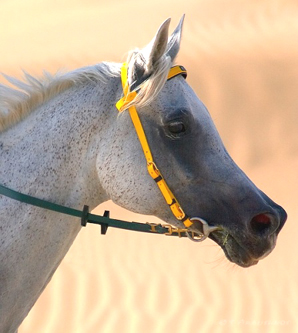Detecting Training Injuries
Detecting Training Injuries
Horses in training are subject to many stresses, both physical and psychological. Which may result in injury or sickness. By detecting these problems early, horsemen can avoid much of the loss of time and return horses to a full training schedule earlier.
Physical problems resulting from training can be as simple as sore muscles or tiredness to an actual injury. Fortunately, the signs of training problems or injuries in the early stages are very similar, and if the horse is monitored carefully most of these problems can be corrected before they become debilitating.
The problems experienced by horses in training are not only physical but may be caused by psychological factors. For example, a horse that is nervous and upset tends to "shunt" blood from the digestive organs to the large muscles of the body. This change and other metabolic changes in the body alters normal body functions Digestive disturbances and neuromuscular dysfunction are the result. Therefore, a horse that is nervous and upset can be just as much of a problem as one that has a physical injury.
The first signs of a training injury or problem usually surface as a slight personality change, such as slowed response to stimulus or lethargy. The horse may be unable to complete the workout or not in the usual fashion. Horses showing these signs typically go off feed, at least partially, and fail to recover from a hard workout in a normal period of time. Loose bowels, poor recovery rate after exercise and aggravation, such as tail switching, may indicate that the horse is getting too hot during exercise. The basal body functions will give an indication of problems. A horse that is sore or injured in some way will have a tendency to have an increased pulse rate, respiration rate or temperature. An elevated temperature can indicate anything from soreness or fatigue to infections. Good records of these basal body functions and observation of the other changes in the horse's personality or attitude will give the horseman a good indication of problems before they become serious.
When a problem is indicated or suspected, a horseman should first try to identify the problem and then eliminate the possibilities. If the problem is not specific, it is generally wise to either rest the horse for a few days or back off the training schedule in order to allow the horse to recover more completely and avoid injury. In many cases, the horse's body is capable of responding quickly and recovering effectively if it is allowed the opportunity.
By detecting training problems early and making the appropriate changes in the training schedule and/or rest, many of these problems can be avoided.
By Dr. Clinton Depew
University of Louisiana
Horses All June 89, Hill Spring, Alberta

- Log in to post comments
